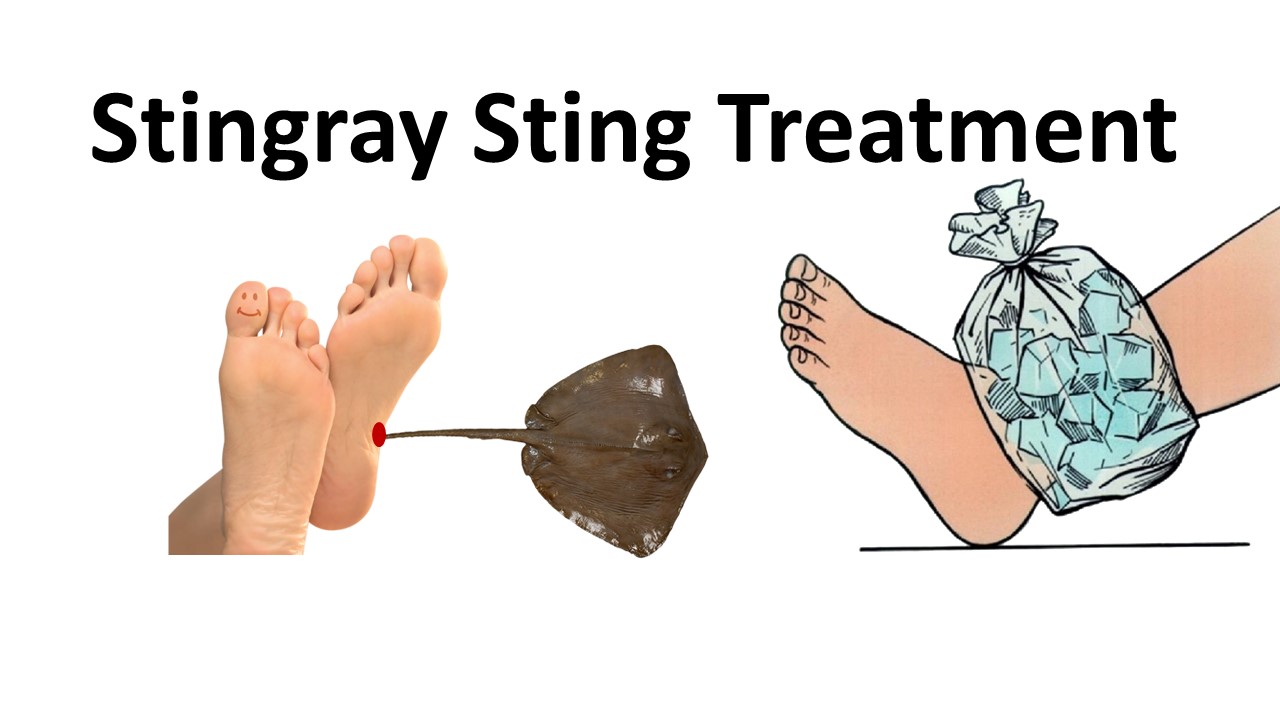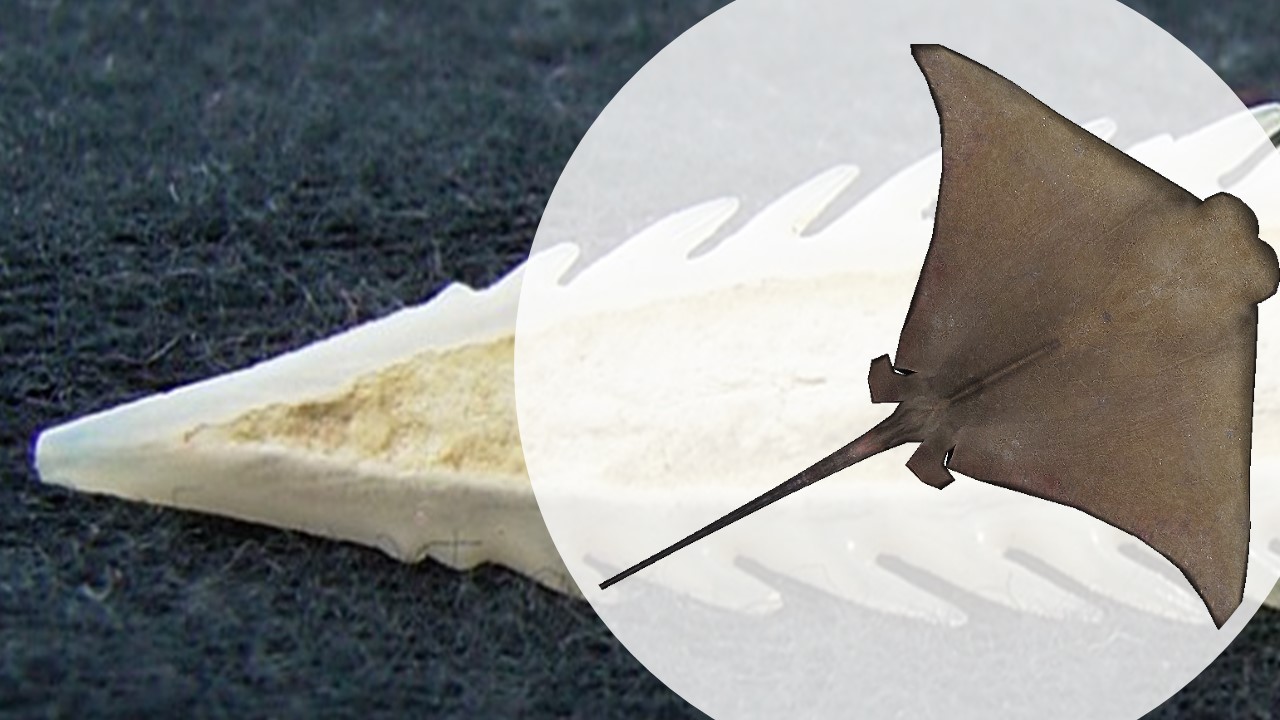Day After Stingray Sting: How To Conquer Pain with Ease
The day after stingray sting can be a challenging and uncomfortable experience. Being stung by a stingray can be a painful and even traumatic experience. The good news is that most people recover completely from a stingray sting within a few days.
However, the day after stingray sting can be particularly uncomfortable, as the pain and swelling may be at their worst. The day after stingray sting can send shivers down your spine as you grapple with discomfort and uncertainty.
The fear of the unknown lingers, but fear not, for within this article lies the vital knowledge and effective strategies that will help you navigate the aftermath of a stingray encounter. Whether you recently found yourself face-to-face with these enigmatic sea creatures or you’re seeking precautionary measures, rest assured that we are here to guide you through this nerve-wracking experience.
Day After Stingray Sting: What To Expect
The day after a stingray sting, individuals may experience a continuation of symptoms and certain developments as the body responds and begins the healing process. Here’s an overview of what commonly happens on the day following a stingray sting:
1. Pain And Discomfort
Pain at the sting site can persist, though it may gradually lessen over time. The level of pain can vary depending on factors such as the sting’s severity, individual pain tolerance, and the sting site’s location.
2. Swelling And Redness
Swelling around the sting area may still be present, although it may begin to subside. Redness and inflammation can also persist, but they may gradually improve.
3. Bruising And Discoloration
Bruising around the sting site can become more pronounced. The area may take on purple or greenish hues as the body reabsorbs the blood released during the initial injury.
4. Itching And Irritation
Itching around the sting site can continue or intensify as part of the healing process. This is a common response to the inflammatory reaction caused by the sting, but it should gradually subside over time.
5. Tenderness And Sensitivity
The sting area may feel tender and sensitive to touch. Even gentle pressure or contact with clothing or other objects can cause discomfort. This tenderness can persist for several days after the sting.
6. Systemic Symptoms
In some cases, you may experience systemic symptoms beyond the localized sting site. These can include nausea, vomiting, muscle cramps, dizziness, weakness, and in rare instances, allergic reactions. If any of these systemic symptoms occur, it is important to seek medical attention promptly.
7. Wound Healing
The body initiates the healing process, and the sting wound begins to close and form a scab. It is important to let the wound heal naturally and avoid picking at the scab, as this can delay healing and increase the risk of infection.
8. Risk Of Infection
There is an ongoing risk of infection during this stage. Proper wound care, such as keeping the area clean and dry, is essential to minimize the chances of bacteria entering the wound and causing an infection.
9. Monitoring For Complications
It is important to monitor the sting site for any signs of complications. If symptoms worsen, new symptoms arise, or there are signs of infection (increased pain, worsening redness, swelling, pus, or fever), seeking medical attention is advised.
10. Rest And Recovery
Resting the affected area and avoiding strenuous activities can aid in the recovery process. Providing the body with adequate time to heal is essential for a smooth recovery.
It is also important to note that individual responses to a stingray sting can vary, and not everyone will experience all of these symptoms. If you have any concerns or if the symptoms are severe, persistent, or worsening, it is always best to consult a healthcare professional for proper evaluation and guidance.
RELATED: What To Do If A Jellyfish Stings You? Essential Steps for Quick Relief
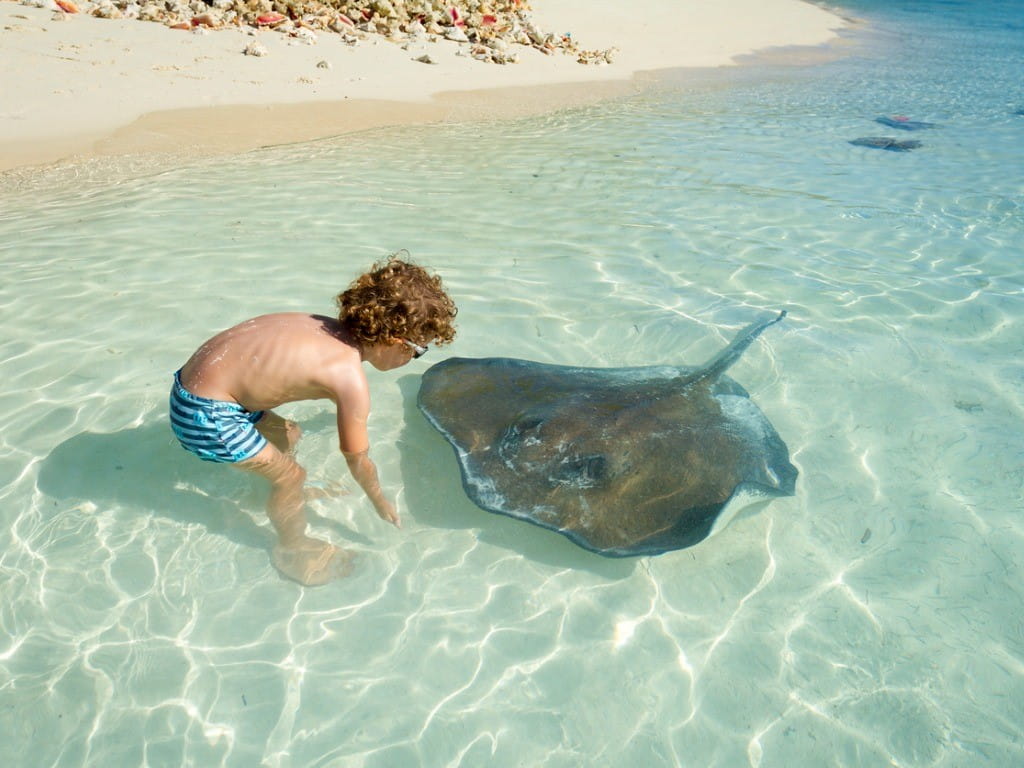
Tips On How To Manage Stingray Sting Symptoms Day After Stingray Sting
Managing the symptoms following a stingray sting day after stingray sting can help alleviate discomfort and promote a smoother recovery. Here are some tips on how to manage common symptoms a day after stingray sting:
1. Pain Management
– Over-the-counter pain relievers: Nonsteroidal anti-inflammatory drugs (NSAIDs) like ibuprofen can help reduce pain and inflammation. Follow the recommended dosage.
– Topical pain relief: Applying a cold compress or ice pack wrapped in a cloth to the sting area can numb the pain and reduce swelling. Limit the application to 10-15 minutes at a time to prevent skin damage.
– Elevation: Elevating the affected limb, if possible, can help reduce swelling and alleviate pain.
2. Swelling and Redness
– Cold compress: Applying a cold compress can help reduce swelling. Avoid applying ice directly to the skin to prevent frostbite.
– Immersion in warm water: Soaking the affected area in comfortably warm water for 15-20 minutes a few times a day can help reduce swelling and promote blood circulation.
3. Itching and Irritation
– Topical treatments: Over-the-counter hydrocortisone cream or calamine lotion can provide relief from itching and soothe the skin. Follow the product instructions for application.
– Avoid scratching: Although it can be tempting, scratching the sting site can further irritate the skin and potentially introduce infection. Instead, gently pat or tap the area to alleviate itching.
4. Bruising
– Arnica gel or cream: Applying arnica gel or cream to the bruised area may help reduce discoloration and promote healing. Follow the product instructions for application.
– Time and rest: Bruising typically resolves on its own over time. Getting adequate rest and avoiding activities that may worsen bruising can aid in the healing process.
5. Tenderness and Sensitivity
– Gentle care: Handle the affected area with care to avoid further discomfort. Avoid tight clothing or accessories that can rub against the sting site.
– Soft padding: If necessary, consider using a soft padding or bandage to protect the area from friction and external irritants.
6. Systemic Symptoms
– Medical attention: If you experience severe or worsening systemic symptoms, such as difficulty breathing, chest pain, or an allergic reaction (swelling, difficulty swallowing, hives, etc.), seek immediate medical attention.
7. General Care
– Keep the wound clean: Clean the sting site gently with mild soap and water to prevent infection. Avoid using harsh antiseptics, which can delay healing.
– Monitor for signs of infection: Watch for increased pain, redness, swelling, pus, or fever, as these can indicate an infection. Seek medical attention if any signs of infection develop.
– Follow-up with a healthcare provider: If symptoms persist or worsen, consult a healthcare professional for further evaluation and guidance.
Remember, these tips are general guidelines, and it is important to consult with a healthcare professional for personalized advice and treatment recommendations based on your specific situation.
RELATED: Can You Drown With A Life Jacket – Understanding The Limitations
Day After Stingray Sting Recovery Process
The recovery process following a day after stingray sting can vary depending on the severity of the sting and individual factors. Here is an overview of the general recovery process:
1. Immediate Care and First Aid: Proper immediate care and first aid are crucial for initiating the healing process. Cleaning the wound with mild soap and water, removing any foreign particles, and applying an antiseptic can help prevent infection.
2. Pain Management: Managing pain is an important aspect of the recovery process. Over-the-counter pain relievers, as recommended by a healthcare professional, can help alleviate discomfort. Topical pain relief options, such as cold compresses or numbing creams, may also provide relief.
3. Wound Healing: The wound will gradually heal over time. It is important to keep the wound clean and dry, following any specific instructions provided by a healthcare professional. Avoid picking at scabs or removing them prematurely, as this can impede the healing process and increase the risk of infection.
4. Swelling and Inflammation: Swelling and inflammation around the sting site will typically diminish as the healing progresses. Applying cold compresses, elevating the affected area, and immersing it in warm water can help reduce swelling and promote blood circulation.
5. Monitoring for Infection: Throughout the recovery process, it is crucial to monitor the sting site for any signs of infection. Increased pain, redness, swelling, pus, or fever may indicate an infection. If any of these symptoms develop, seeking medical attention is essential.
6. Timeframe for Recovery: The timeframe for recovery can vary based on the individual and the severity of the sting. In most cases, the acute symptoms, such as pain and swelling, begin to improve within a few days.
The wound generally takes around 1-2 weeks to heal, although deeper or more severe stings may require a longer recovery period.
7. Follow-up with Healthcare Professional: If symptoms persist, worsen, or if there are concerns about the healing process, it is important to follow up with a healthcare professional. They can assess the progress, provide appropriate guidance, and address any complications that may arise.
8. Prevention and Future Precautions: After recovering from a stingray sting, it is important to take preventive measures to avoid future encounters. This includes wearing protective footwear in stingray-prone areas, being cautious while in the water, and respecting marine life.
Every individual’s recovery process may differ, and it is imperative to consult with a healthcare professional for personalized advice and guidance based on the specific circumstances of the sting and individual health.
RELATED: What Are The Best Water Shoes For The Beach
Day After Stingray Sting – How Painful Is A Stingray Sting
A stingray sting can be quite painful, and the level of pain experienced can vary depending on several factors. These factors include the species of stingray, the location and depth of the sting, and your pain tolerance.
When a stingray stings, it uses its venomous barb, located on its tail, to inject venom into the victim. The venom is primarily used by the stingray for self-defense and contains various toxins.
The immediate pain caused by a stingray sting is often described as intense and sharp. It can be likened to a stabbing or burning sensation at the site of the sting.
The pain from a stingray sting is typically localized to the area of the wound and can radiate outward. It is not uncommon for the pain to persist for several hours or even days after the initial sting.
The intensity of the pain can vary from person to person, with some individuals experiencing milder pain while others may find it more severe.
It’s important to note that in addition to the initial pain, other symptoms such as swelling, redness, and inflammation can accompany a stingray sting. Prompt medical attention and appropriate treatment are crucial to alleviate pain and prevent potential complications.
If you are stung by a stingray, seeking medical support is recommended to ensure proper evaluation and management of the injury while also avoiding long-term effects.
READ ALSO: Do Water Shoes Protect Against Sea Urchins
What To Do If Stung By Stingray
If you are stung by a stingray, it’s important to take immediate action to minimize further injury and seek appropriate medical attention. Here are the steps to follow if you are stung by a stingray:
1. Get out of the water: If you are in the water when stung, safely and calmly make your way to shore or a stable surface.
2. Control bleeding (if any): Apply direct pressure to the wound if it is actively bleeding using a clean cloth or your hand. This can help reduce blood loss.
3. Remove any visible stingers or foreign objects: If there are any visible stingers or foreign objects embedded in the wound, do not attempt to remove them yourself. Seek medical help for proper removal.
4. Clean the wound: Rinse the affected area gently with seawater or clean, warm water to remove any debris or contaminants. Avoid using harsh antiseptics or rubbing the wound vigorously, as this can further irritate your skin.
5. Soak in hot water: Immerse the affected area in hot water (as hot as can be tolerated) for 30 to 90 minutes. This can help alleviate pain by denaturing the venom. However, ensure the water is not scalding to avoid burns.
6. Seek medical attention: Regardless of the severity of the sting, it is important to seek medical attention. Stingray stings can cause significant tissue damage, and medical professionals can assess the wound, clean it thoroughly, and provide appropriate treatment.
They can also evaluate for potential complications or the need for tetanus or antibiotic prophylaxis.
7. Follow medical advice and treatment: Adhere to the instructions provided by the medical professional. They may prescribe pain medication, administer tetanus shots if necessary, and monitor the wound for signs of infection or other complications.
It’s crucial to remember that stingray stings can be serious, and complications can arise. Delaying or avoiding medical attention can lead to further injury or infection. Even if you think the sting is minor, it is still advisable to seek medical help to ensure proper wound care and management.
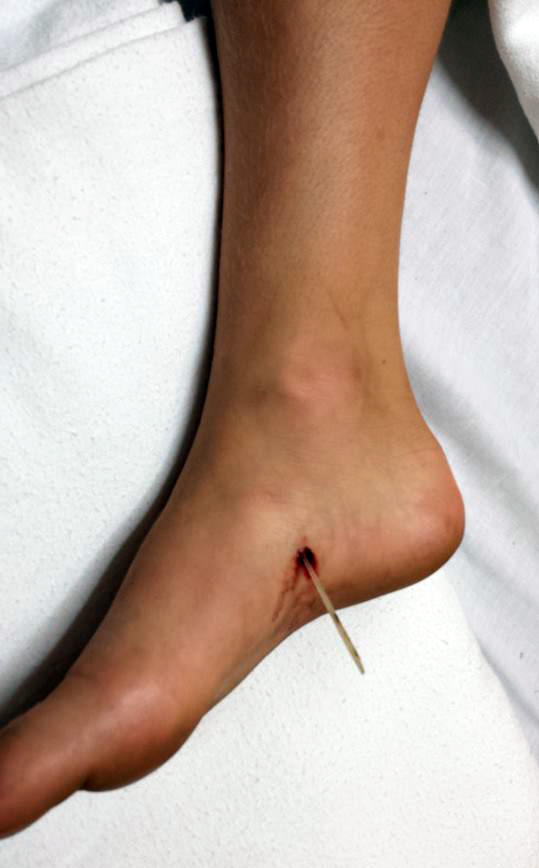
Stingray Sting On Foot
A stingray sting on the foot can be very painful and cause significant swelling. The pain usually peaks within 30 minutes to an hour of the sting and then gradually subsides over the next 24-48 hours. However, some people may continue to experience pain for several days or even weeks.
Here are the first aid steps for a stingray sting on the foot:
- Remove yourself from the water. If you are still in the water, get out as quickly as possible.
- Inspect the wound. Look for the barb that caused the sting. If you can see it, try to remove it with tweezers. Be careful not to push the barb further into the wound. Better still, go to the hospital.
- Clean the wound. Rinse the wound with saltwater or clean, fresh water.
- Apply pressure to the wound. Apply pressure to the wound with a clean cloth or bandage to stop the bleeding.
- Elevate the foot. Elevate the foot to reduce swelling.
- Soak the foot in hot water. Soaking the foot in hot water (110°F to 115°F) for 30-90 minutes can help to relieve pain and reduce swelling.
- Seek medical attention. If you are experiencing severe pain, swelling, or other symptoms, such as nausea, vomiting, or difficulty breathing, seek medical attention immediately.
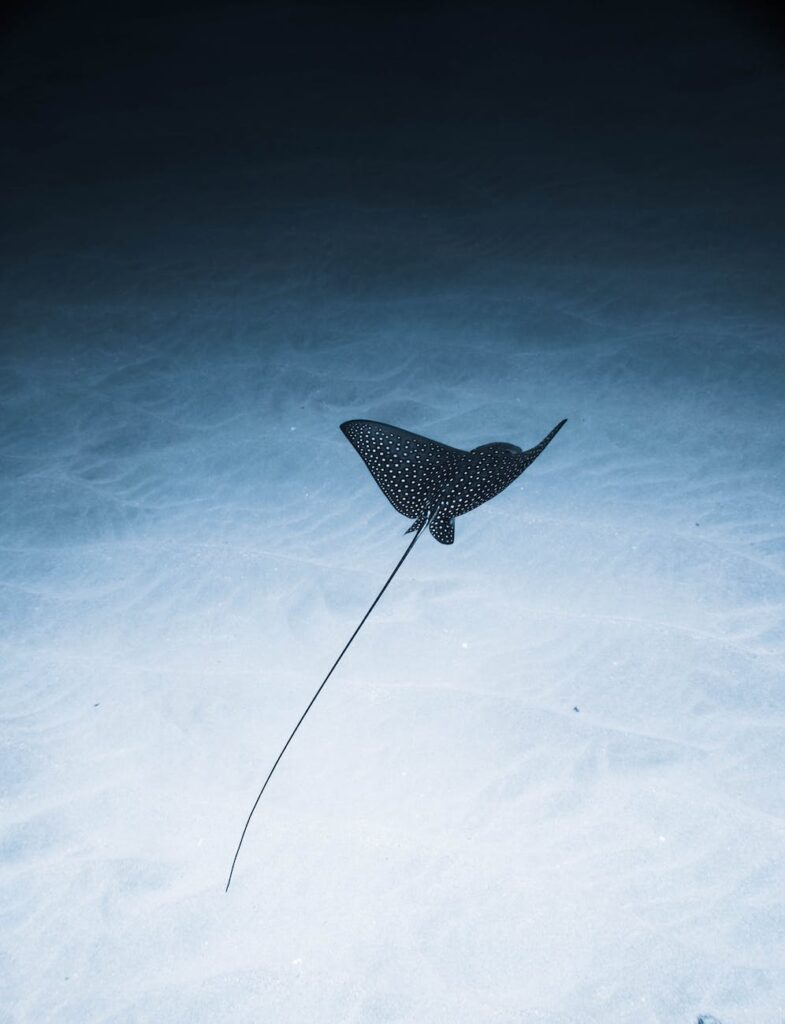
How Common Are Stingray Stings
Stingray stings are relatively common, especially in coastal areas where stingrays are found. In the United States, there are an estimated 750-2,000 stingray stings reported each year.
However, the actual number of stings is likely much higher, as many people do not seek medical attention for minor stings.
The most common time for stingray stings is during the summer months when people are more likely to be swimming in shallow water. Stingrays are often found in shallow water, where they bury themselves in the sand.
When a person steps on a stingray, the stingray may lash out with its tail, which has a sharp spine that can deliver venom.
RELATED: 10 Best Webbed Swimming Gloves For Everyone
The Bottom Line On Day After Stingray Sting
The day after stingray sting can bring discomfort and specific symptoms such as pain, swelling, and redness. However, by following proper care and seeking medical attention if needed, you can effectively manage these symptoms and promote a smooth recovery.
Remember, swift action and proactive measures are crucial to ensuring a healthy and pain-free day after stingray sting. Take control of your recovery and prioritize your well-being after a stingray encounter.
READ ALSO: Do Water Shoes Protect From Jellyfish? Find Out Now!

